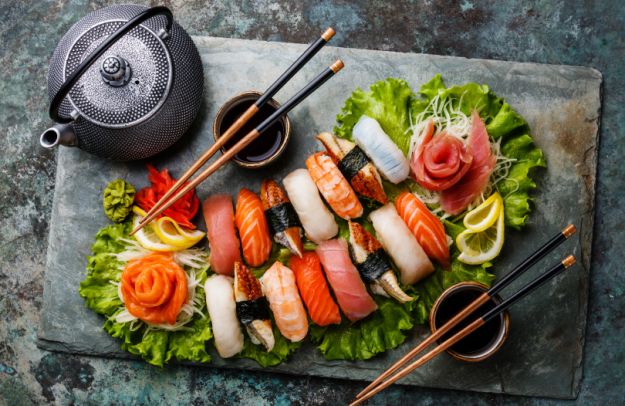Understanding Japanese Food Presentation: Aesthetic and Flavor

Beyond the Bite: Understanding Japanese Food Presentation – Aesthetics and Flavor in Harmony
Japanese cuisine is renowned not only for its delicate flavors and fresh ingredients but also for its meticulous presentation. It’s an art form that goes beyond mere aesthetics, subtly enhancing the dining experience and reflecting a deep appreciation for the harmony of taste, texture, and visual appeal.
The Art of Wa-Shoku: A Culinary Symphony
The term “Wa-Shoku” encapsulates the essence of Japanese food. It signifies a culinary tradition that emphasizes natural ingredients, seasonal freshness, and a focus on subtle flavors. This philosophy extends to presentation, where each element is carefully considered to create a visually harmonious composition.
The Five Senses Engaged:
- Visual Appeal: Japanese chefs prioritize color and texture, using seasonal ingredients to create vibrant and visually engaging dishes. The arrangement of food on the plate often follows a specific structure, emphasizing balance and simplicity.
- Aromatic Delights: Fresh ingredients are celebrated for their natural aromas. The use of fragrant herbs, spices, and cooking techniques like grilling and steaming further enhance the olfactory experience.
- Textural Nuances: From the crispness of vegetables to the smooth texture of tofu, Japanese food offers a variety of textural contrasts. This interplay of textures adds complexity and depth to the overall dining experience.
- Taste Harmony: While individual flavors are distinct, they are carefully combined to create a balanced taste profile. The use of umami, the fifth taste, adds richness and depth to the overall flavor profile.
- Auditory Delight: The delicate clatter of chopsticks on ceramic plates, the gentle simmering of soup, and the subtle crackle of grilled fish create a soothing and immersive sound experience.
Beyond the Plate: The Cultural Context
Japanese food presentation goes beyond the individual dish. It’s an integral part of the dining experience and reflects the values of Japanese culture.
- Respect for Ingredients: Careful presentation demonstrates respect for the ingredients and their source.
- Emphasis on Harmony: The visual harmony of the dish reflects the importance of balance and order in Japanese society.
- Aesthetics and Simplicity: The minimalist approach to presentation emphasizes the beauty of natural ingredients and the elegance of simplicity.
The Power of Presentation:
Beyond the cultural context, food presentation plays a crucial role in influencing our perception of taste. Research has shown that the appearance of food can significantly impact our enjoyment.
- Increased Appetite: A beautifully presented dish can stimulate our appetite and make food more appealing.
- Enhanced Flavor Perception: Visual cues can influence our perception of flavor, making dishes seem more flavorful and satisfying.
- Memorable Dining Experience: The artistry of Japanese food presentation creates a memorable and enriching dining experience.
Experiencing the Art:
Whether you’re a seasoned foodie or a curious novice, immersing yourself in the world of Japanese food presentation offers a unique and enriching experience. Visiting a traditional Japanese restaurant, taking a cooking class, or simply observing the meticulous presentation of ingredients at a local grocery store can provide valuable insights into this culinary art form.
By understanding the philosophy behind Japanese food presentation, we can appreciate the artistry and intentionality that goes into each dish. It’s a reminder that food is not just sustenance, but a sensory and cultural experience that nourishes both the body and the soul.

